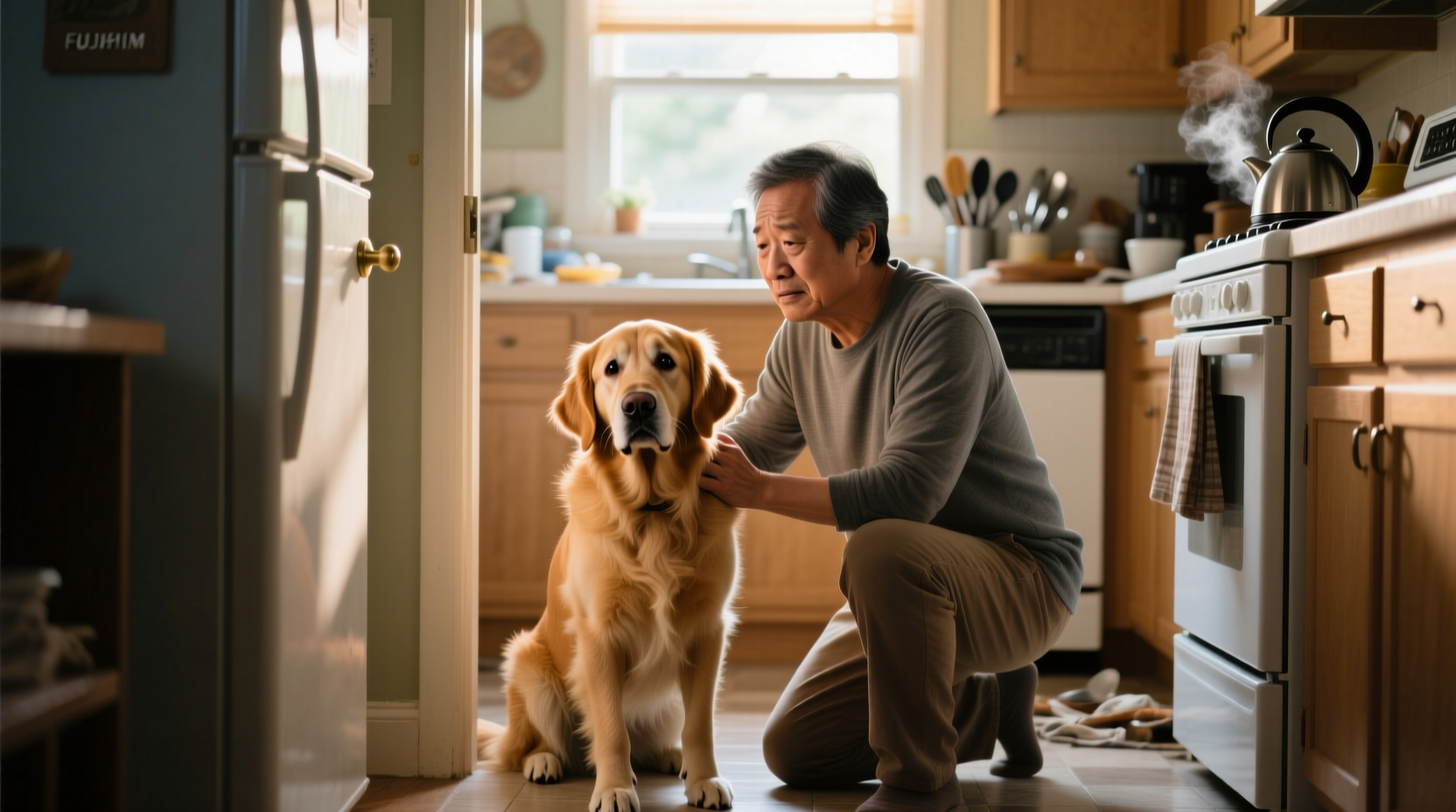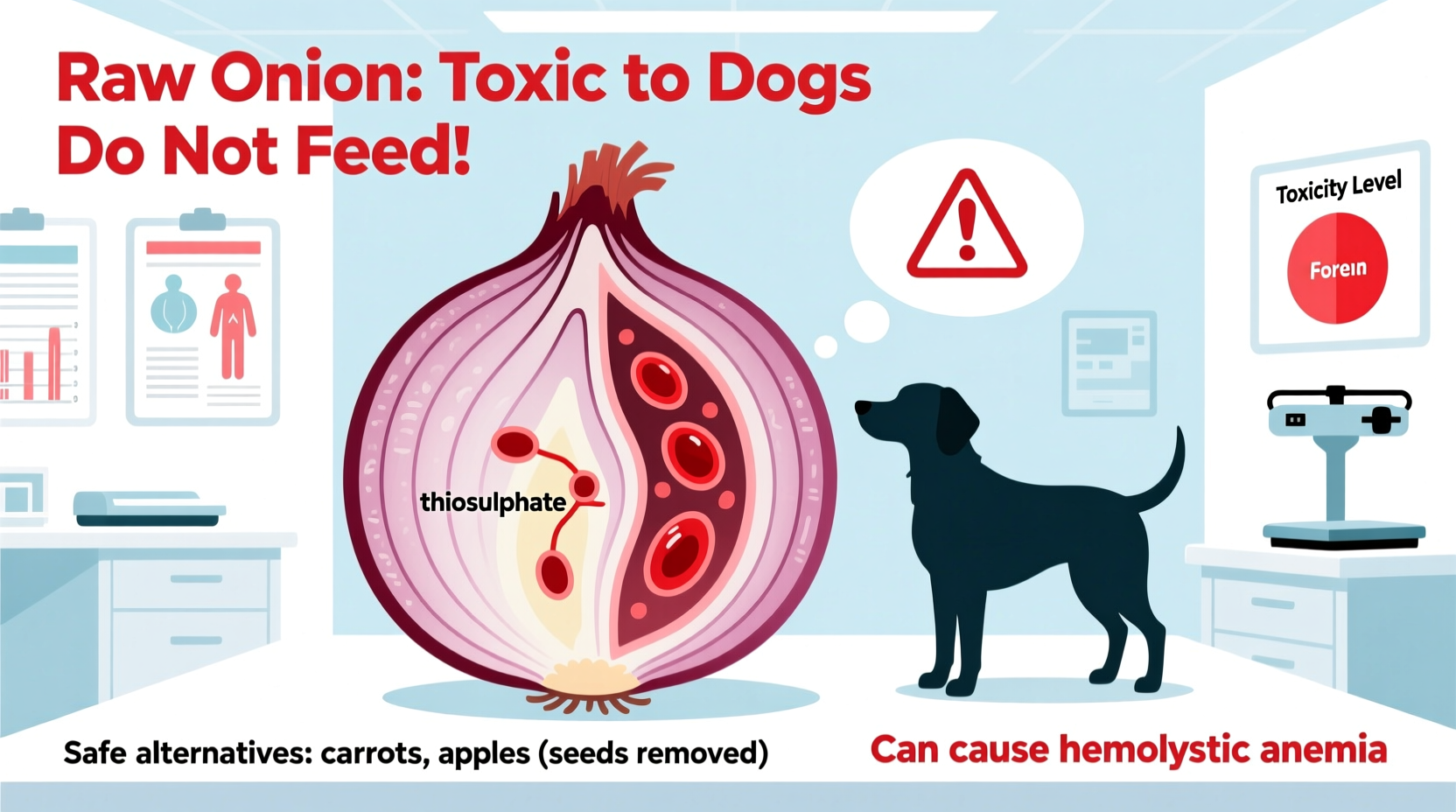Yes, raw onions are extremely dangerous for dogs. All parts of the onion plant—including raw, cooked, powdered, and even onion juice—contain toxic compounds that can cause life-threatening hemolytic anemia in dogs. Just 5 grams of onion per kilogram of body weight can trigger poisoning, with symptoms appearing 24-72 hours after ingestion.
Why Onions Are Toxic to Dogs: The Science Behind the Danger
Onions belong to the Allium family, which includes garlic, leeks, and chives. These plants contain N-propyl disulfide and thiosulfate compounds that dogs cannot metabolize effectively. When ingested, these toxins oxidize hemoglobin in red blood cells, causing them to rupture—a condition known as hemolytic anemia.
Unlike humans, dogs lack sufficient levels of the enzyme needed to process these compounds safely. This biological vulnerability means even small amounts of onion can accumulate to dangerous levels in their system. Japanese dog breeds like Akitas and Shiba Inus appear particularly sensitive due to genetic factors affecting their red blood cell structure.

How Much Onion Is Dangerous? Understanding Toxic Doses
The toxic threshold varies by your dog's size and breed, but veterinarians warn that as little as 0.5% of a dog's body weight in onions can cause poisoning. For example, a single medium onion (about 150g) could seriously harm a 30-pound dog.
| Dog Weight | Minimum Toxic Amount | Severe Poisoning Risk |
|---|---|---|
| 10 lbs (4.5 kg) | 1/4 cup chopped onion | 1/2 cup or more |
| 30 lbs (13.6 kg) | 3/4 cup chopped onion | 1.5 cups or more |
| 60 lbs (27.2 kg) | 1.5 cups chopped onion | 3 cups or more |
| 100 lbs (45.4 kg) | 2.5 cups chopped onion | 5 cups or more |
Important context: Onion powder is significantly more concentrated—just one teaspoon equals a full onion. Baby food containing onion powder has caused multiple documented poisoning cases when used to entice sick dogs to eat.
Symptom Timeline: What to Watch For After Exposure
Onion poisoning symptoms often develop gradually, making early detection challenging. The Merck Veterinary Manual documents this progression:
- 0-24 hours: Vomiting, diarrhea, abdominal pain, and lethargy (not always present)
- 24-48 hours: Pale gums, rapid breathing, increased heart rate as anemia develops
- 48-72 hours: Dark urine (from hemoglobin breakdown), weakness, collapse
- 72+ hours: Severe anemia requiring blood transfusion; potential organ damage
The ASPCA Animal Poison Control Center reports that 68% of onion poisoning cases show symptoms within 48 hours, but some dogs exhibit delayed reactions up to 5 days post-ingestion, especially with repeated small exposures.
Immediate Action Plan: What to Do If Your Dog Ate Onions
If your dog consumed onions, follow these vet-recommended steps:
- Calculate exposure amount: Weigh any remaining onion or estimate how much was eaten
- Contact emergency veterinary care immediately: Time is critical—even if no symptoms appear
- Do NOT induce vomiting unless specifically instructed by a vet (could worsen damage)
- Bring packaging or food sample: Helps vets determine exact toxin concentration
- Prepare for possible treatments: Activated charcoal, IV fluids, oxygen therapy, or blood transfusion
The Pet Poison Helpline emphasizes that early intervention dramatically improves outcomes. Dogs treated within 4 hours of ingestion typically recover fully, while delayed treatment increases mortality risk by 40% according to veterinary case studies.
Hidden Onion Sources You Might Not Expect
Onions appear in many unexpected places that could endanger your dog:
- Processed human foods (soups, sauces, baby food)
- Homemade broth or stock
- Leftover pizza or sandwiches
- "Dog-safe" human food products
- Onion powder in seasoning blends
- Residue on cooking surfaces
A 2024 study published in the Journal of Veterinary Emergency and Critical Care found that 32% of onion poisoning cases involved dogs consuming food scraps containing hidden onion derivatives. Always check ingredient labels on any human food you share with your pet.
Safe Flavor Alternatives for Dogs
If you're preparing homemade meals for your dog, consider these safe flavor enhancers:
- Parsley (fresh, in moderation)
- Carrots (cooked or raw)
- Blueberries
- Pumpkin (pure, canned)
- Low-sodium chicken or beef broth (onion-free)
Remember that dogs have different nutritional needs than humans. The American Kennel Club recommends consulting a veterinary nutritionist before making significant changes to your dog's diet.
Prevention Strategies Every Dog Owner Should Implement
Protect your dog with these practical safety measures:
- Store onions and garlic in closed cabinets away from curious noses
- Dispose of onion scraps immediately in secured outdoor bins
- Educate all household members about onion dangers
- Avoid sharing table scraps containing any Allium family members
- Check pet food ingredient lists for hidden onion derivatives
- Keep emergency vet contact information visible
Dog owners should also recognize that garlic—often mistakenly considered safer—is actually five times more toxic than onions by weight. Both belong to the same dangerous plant family.











 浙公网安备
33010002000092号
浙公网安备
33010002000092号 浙B2-20120091-4
浙B2-20120091-4